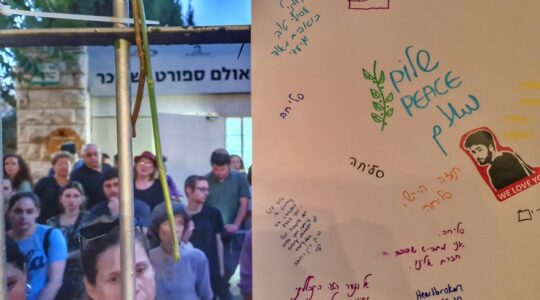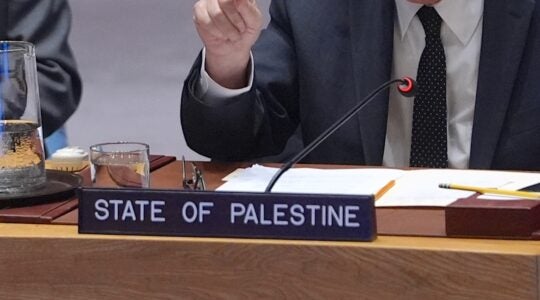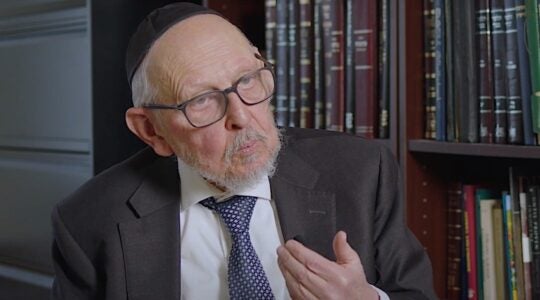Two findings on intermarriage highlight the “New York Jewish Community Study of 2011.” First, there is a huge amount of intermarriage, and it is continuing; between 2006 and 2011, half of the non-Orthodox couples formed were intermarried couples. Second, measured by the study’s index of Jewish engagement, the intermarried score low, but those that do engage act comparably to the in-married. The critical question is, what attracts interfaith families to engage Jewishly?
The study does not identify what attracts and repels interfaith families, but InterfaithFamily’s holiday survey results do. We ask what leads interfaith families to join Jewish organizations and synagogues — and what keeps them away. Our surveys are not “scientific.” Respondents are self-selected and may respond to more than one survey. But our recent report on nearly 700 responses, all from people in interfaith relationships who are raising Jewish children and are members of Jewish organizations, provide the best available data on what matters to them:
n Explicit expressions of welcome. Seventy-nine percent of our respondents said an explicit welcome by organization professionals mattered “a lot”; 70 percent said the same about membership materials, bulletins, and websites. Welcome communicated in public, and open talk of interfaith issues, were identified as helpful. Vague approaches were a barrier.
The study reported that the intermarried were not “uncomfortable” attending most Jewish events and activities. Leading Jewish demographer Steven M. Cohen has said, “If discomfort is not a major obstacle to Jewish engagement, then welcoming is not the solution.” But our respondents were emphatic that what we say (and what we don’t say) heavily influences them. One said, “They treat me like an important part of the Jewish community, even though I am not Jewish.” Another would not join a synagogue that was “not as open to interfaith families” even though it offered a program that her children “adored.”
The most often-mentioned barrier to expanded Jewish connection is perceived unwelcoming attitudes from both professionals and organization members. One respondent said, “As long as being an interfaith family is considered a problem, we will never be reached.”
n Inclusive policies on participation by interfaith families. Synagogue policies on participating in worship services and at life cycle events mattered to 64 percent of respondents “a lot.” One left a congregation that “did not allow the non-Jewish members of my family to fully participate in my son’s bar mitzvah.” Non-acceptance of “patrilineal” Jews was “a real turn-off… even if the kids want to learn, they are told that they can never be Jewish….”
n Invitations to learn vs. invitations to convert. While 32 percent were attracted “a lot” by invitations to learn about conversion, nearly twice as many (58 percent) were attracted by invitations to learn about Judaism. Perceived pressure to convert was a barrier.
n Presence of other interfaith families. Fifth-three said they were attracted “a lot” when “there are a lot of interfaith members.” Said one synagogue member, “The visibility of non-Jewish members encouraged us to join.”
n Programming and groups “for interfaith families.” Forty-five percent of respondents were attracted “a lot” when organizations marketed programs “described as … ‘for interfaith families,’” and 30 percent were attracted when groups of interfaith couples (like chavurahs and interfaith discussion groups) were organized.
These findings suggest tangible steps communities can take to attract interfaith families to Jewish organizations:
n Make available and publicize information about welcoming organizations, professionals and programs, so that potentially interested interfaith couples will learn they are welcome and find out what is available.
n Provide resource materials and inclusivity and sensitivity trainings to local Jewish professionals and lay leaders, so that interfaith couples will experience a warm welcome when they do connect. These materials and trainings can help organizations and professionals resolve difficult issues around ritual and leadership participation, and advise them how best to present opportunities for Jewish learning and for conversion.
n Offer programs and classes explicitly marketed as “for interfaith families,” and foster the formation of groups of interfaith couples and families in which they can explore and experience Jewish life together.
These strategies are aligned with the recommendations of the historic December 2011 report of the UJA-Federation of New York’s Task Force on Welcoming Interfaith Families. They are endorsed by the study’s comment that “we ought to be focusing on engaging the intermarried, approaches that certainly include welcoming, but go to building relationships and offering opportunities to educate and participate.” InterfaithFamily’s Your Community initiative implements the same framework. Our highly successful pilot, InterfaithFamily/Chicago, will soon be replicated in San Francisco and Philadelphia.
The Interfaith Family holiday survey figures demonstrate that the goal of having more than 50 percent of interfaith families raise their children Jewish is within reach. In addition to the 31 percent of the children of intermarried households who are raised Jewish, 11 percent more are raised “Jewish and something else,” and 13 percent have parents who are undecided. Let’s start a sustained communal effort to engage interfaith families so that by the next community study many of those children will move into the Jewish column.
Edmund Case is the founder and CEO of InterfaithFamily.
The New York Jewish Week brings you the stories behind the headlines, keeping you connected to Jewish life in New York. Help sustain the reporting you trust by donating today.





